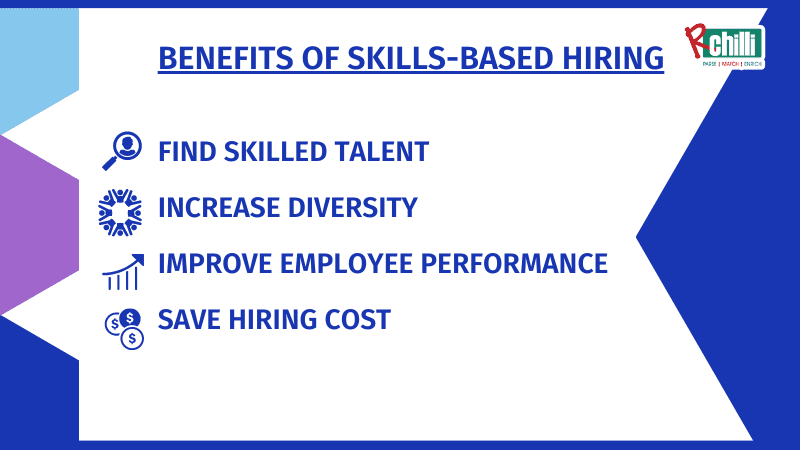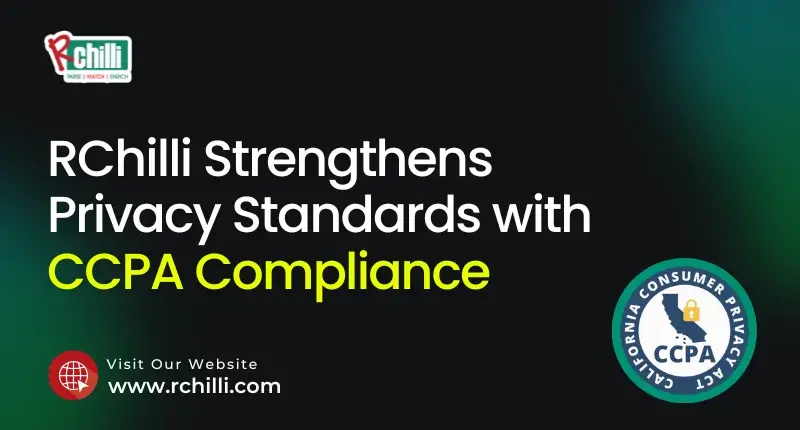The Secrets to Successful Skills-Based Hiring
by Navjot Kaur

Do you know why skills-based hiring is gaining popularity over traditional hiring methods? That’s because skills-based hiring emphasizes candidates' skills/abilities. This blog explores all you need to know about skills-based hiring, including the benefits, the process, and how to implement it in your organization.
What is Skills-based Hiring?
Skills-based hiring is a recruitment strategy that prioritizes a candidate's skills and abilities over educational degrees, experience, job titles, etc. Rather than focusing on credentials or past job roles, skills-based hiring aims to identify candidates with the skills necessary to excel in a particular position.
This type of hiring is becoming increasingly popular as companies look for the right fit for their organization rather than just filling a position.

Benefits of Skills-based Hiring
There are many benefits of using a skills-based hiring process, including the following:
-
Find Skilled Talent:
By focusing on skills rather than traditional qualifications, companies can better identify candidates who are a good fit for the job, increasing job matching accuracy by up to 45%, even if those candidates don't have the usual credentials.
-
Increase Diversity:
Skills-based hiring can increase diversity in the workplace, as it removes the emphasis on traditional qualifications, which can limit the pool of applicants. -
Improve Employee Performance:
By hiring employees based on their skills, organizations can ensure they have the right person for the job, leading to improved performance and increased job satisfaction. -
Save Hiring Cost:
Hiring the wrong person can be costly in time and money. By focusing on skills, organizations can reduce the risk of hiring the wrong person and save money in the long run.
The Process of Skills-based Hiring
The process of skills-based hiring can be broken down into three main stages:
- Job Profile Creation: The first step in the process is to create a job profile, which defines the specific skills and knowledge required for a particular job. This job profile should be developed with stakeholders, including HR, the hiring manager, and current employees.
- Skill Assessment: After creating the job profile, the recruiters can design a skill assessment to evaluate the candidate's ability to perform the required skills. The evaluation may include behavioral interviews, work samples, simulations, aptitude tests, and knowledge assessments.
- Evaluation and Selection: The final stage of the process is to evaluate the skill assessment results and select the best candidate for the job. This can be done by comparing the assessment results to the job profile and selecting the candidate with the best match.
How to Implement Skills-based Hiring in Your Organization?
A skills-based hiring approach typically involves creating a skills taxonomy of the essential abilities required for a particular job, including hard skills (like coding, writing, or technical expertise) and soft skills (like communication, teamwork, or problem-solving).
What Is Skills Taxonomy?
A skills taxonomy is a hierarchical organization of skills, similar to a classification system used to organize and categorize different skills. It can define the skills necessary for a particular job or profession, identify an individual's skills, or design training and development programs. Skills taxonomy helps recruiters and hiring managers identify better candidates based on their skills and match them with job requirements.
Download our skills taxonomy infographic to learn how you can identify and hire top talent.
Top 5 Use Cases of Skills Taxonomy
- Create Skill Profiles: This feature assists employers in comprehending job requirements and identifying suitable candidates based on their skills. By providing a clear outline of the necessary competencies, skill profiles facilitate effective matching of candidates to roles.
- Skills Gap Analysis: This functionality maps current skills against required skills to identify gaps. It enables organizations to pinpoint areas needing training or new hires, ensuring the workforce remains competitive and capable.
- Automated Assessments: Automated assessments fill in skills that applicants may have omitted on their resumes. By using predefined criteria to evaluate candidates' abilities, this ensures a thorough review based on actual performance rather than self-reported data.
- Utilize Existing Talent: A skills database for existing job positions helps organizations recognize and leverage the skills of their current employees. This facilitates internal mobility and career development opportunities.
- Link Job Profiles to Skills: By identifying the necessary skills for job profiles and vice versa, this feature ensures that hiring practices align with strategic goals. It enhances overall effectiveness and productivity by connecting job profiles with specific skills.
Skills-based hiring is a modern recruitment method that prioritizes candidates' skills over their educational degrees and past job roles. This type of hiring helps companies find the right fit for their organization and increase diversity in their hiring processes. Implementing a skills taxonomy can help employers create skill profiles, conduct skills gap analysis, use automated assessments, make the most of existing talent, and connect job profiles to relevant skills.
By adopting skills-based hiring, organizations can enhance their recruitment processes, build more diverse and competent teams, and ultimately drive better business outcomes.





Leave a Reply